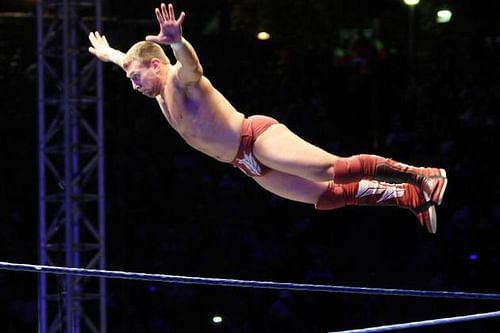
Last Call: Darkness behind the bright lights and knockouts
We all love a good fight; from the days of Frank Gotch to Muhammad Ali and Mike Tyson, the ridiculous amount the fans pay to see the fighters has far surpassed the expectations.
Not too long ago, Floyd Mayweather Jr. and Manny Pacquiao shattered every box office record, once again reminding everyone that combat sports are alive and well.
At the other end of the tunnel is its mirror image, albeit in a more theatrical form – professional wrestling. Combat sports and professional wrestling aren’t much different, but at the same time, they aren’t the same either. While two fighters legitimately “throw down”, and test their chins and brawns during a boxing or an MMA fight, professional wrestlers try to tell a story in the ring.
In the end, that is exactly what separates these art forms. Professional wrestling is more about telling a story – making the fans invest in the characters, while doing the artistic dance inside the ring.
In its very essence, professional wrestling is unlike any other sport, or for that matter, any other form of entertainment. However, there is one dark commonality between professional wrestling and combat sports.
Not too long ago, a professional wrestler by the name of Chris Benoit brought mainstream attention to the business, although it was far from what the promoters would have wanted. The Benoit family tragedy still haunts those involved in the wrestling business, but it did bring upon one good change; it brought more attention to head trauma and issues related to concussions.
It is quite ironic; while we enjoy a good beat down – cheering every punch to the head or a head kick, roaring as the fighter crashes to the mat, oblivious to the surroundings and often, unconscious, it is not a matter of celebrating, as it more or less compounds to the head trauma which would affect the fighters in the long run.
Every concussion, every spinning back fist or a lead hook mounting on the damage, as the fans pay more and more to watch two guys try and knock each other out.
This was once associated with NFL, and how much damage every hard tackle inflicted on the player, but it was just over a decade ago when the sports analysts and the doctors realized it was the same for fighters.
While words such as “blood sport” and “violent” take away the artistic value, it is a double-edged sword – a risk every fighter takes while stepping inside the ring or the cage.
Professional wrestlers, too, go through the same process. Every time someone gets dropped on their head, every “stiff” punch one wrestler dishes out on another, cutting their time short, impacting their health and well-being. Sean O’Haire, Andrew “Test” Martin and Chris Benoit are just a few names whose lives were severely cut short due to the amount of punishment they took.
While WWE has taken various measures of trying to reduce the risks, and providing state of the art testing facilities for its employees, how much can the company protect their superstars when their job involves taking high risk “bumps”?
Yes, things have changed with time for the better. However, fighters such as Gary “Big Daddy” Goodridge remind us of the grim reality behind the bright lights and knockouts. Gary was a prize fighter, and the UFC veteran revealed that he would take multiple fights, sometimes in one day!
Easy money is what you’d expect, and the safety of your health isn’t something that you prioritize when you’re trying to climb the ranks. But how much can your movement and elusive style prevent you from getting hit?
Over the past decade, more emphasis has been given to studying concussion-related issues, and brain trauma and its compounding impacts. Chronic Traumatic Encephalopathy (CTE) is one of the most common diagnoses among the fighters – a degenerative disease which, in time would lead to memory loss, confusion, depression and worst of all, aggression.
The human brain is a funny thing – while most of the times, better judgment prevails, but sometimes, the actions result in considerable brain damage. While WWE has shown intent in protecting its superstars – a prime example being Daniel Bryan’s case, where the company is refusing to clear the grappler for in – ring competition, one can’t help but feel that more work needs to be done by organizations to protect their employees.
No matter what happens, the fans will continue to cheer every knockout. Every time a fighter is knocked unconscious, the fans will pour more money into the sport. Every time a professional wrestler is planted with a spike DDT, the fans will chant for it to happen one more time.
Combat sports isn’t all that glamorous, even though some cards produce more than 10 million dollars in gates and revenues. At the end of the day, money doesn’t amount to much when you have difficulty remembering your name.
This certainly isn’t meant to vilify combat sports. As an avid fan myself, I enjoy every intrinsic detail about the business. Combat sports have now embraced the entertainment aspect – which is nothing but great for the industry and those associated with it.
However, the fans need to remember that behind every victory and defeat, there is a lurking danger. When it would catch up to the fighters is anyone’s guess, but rest assured, in the end, it will.

